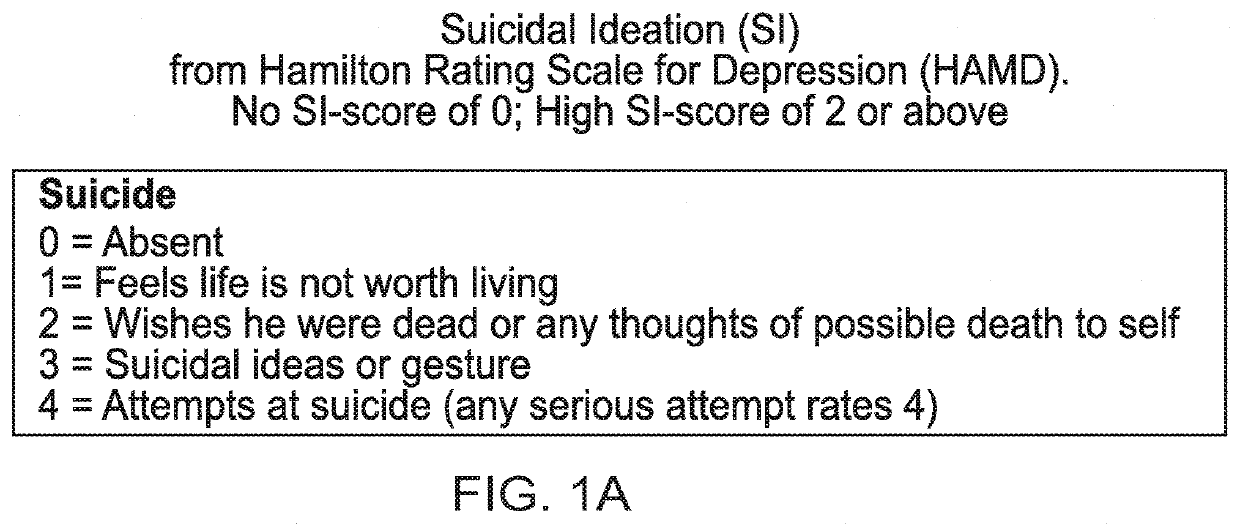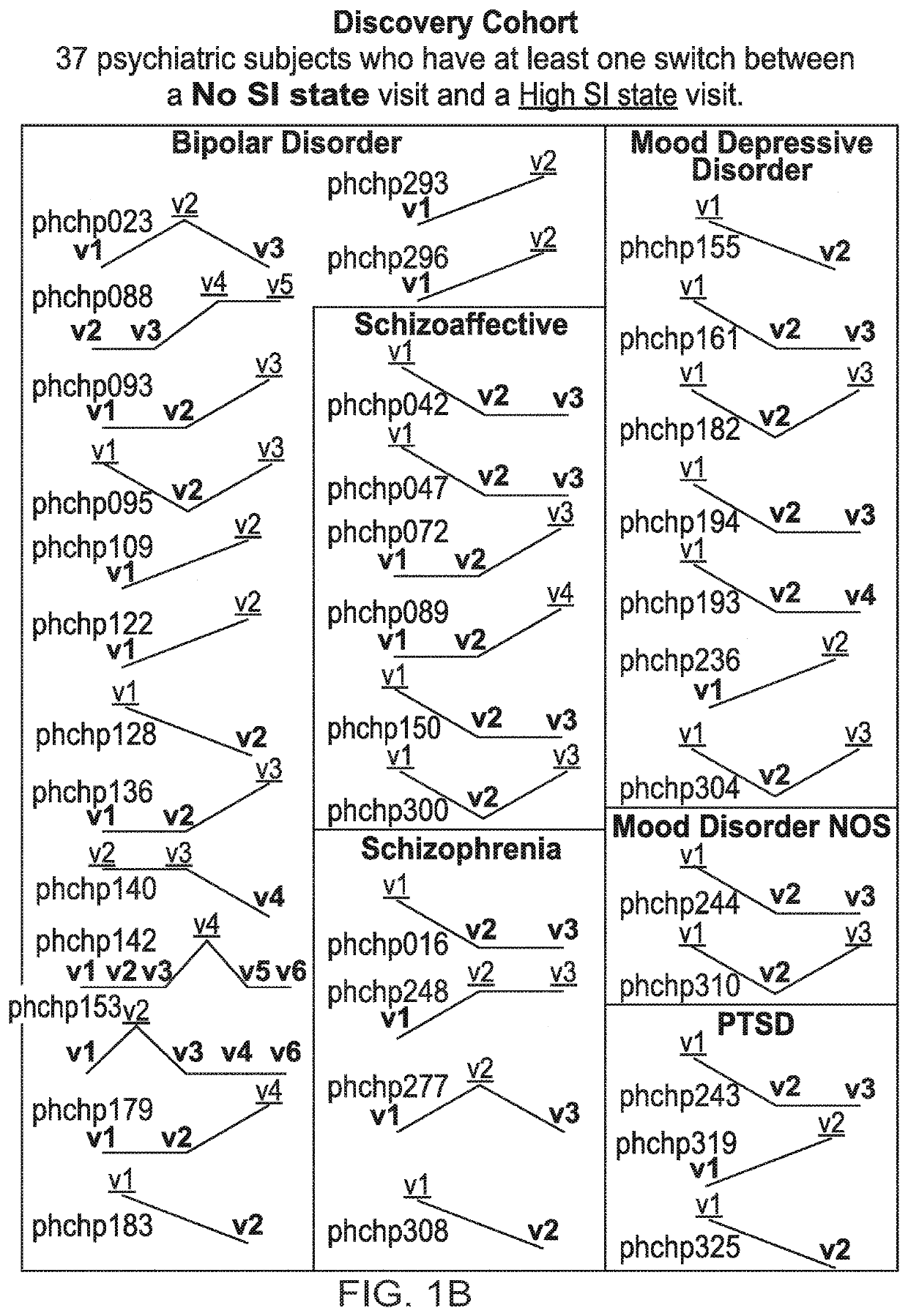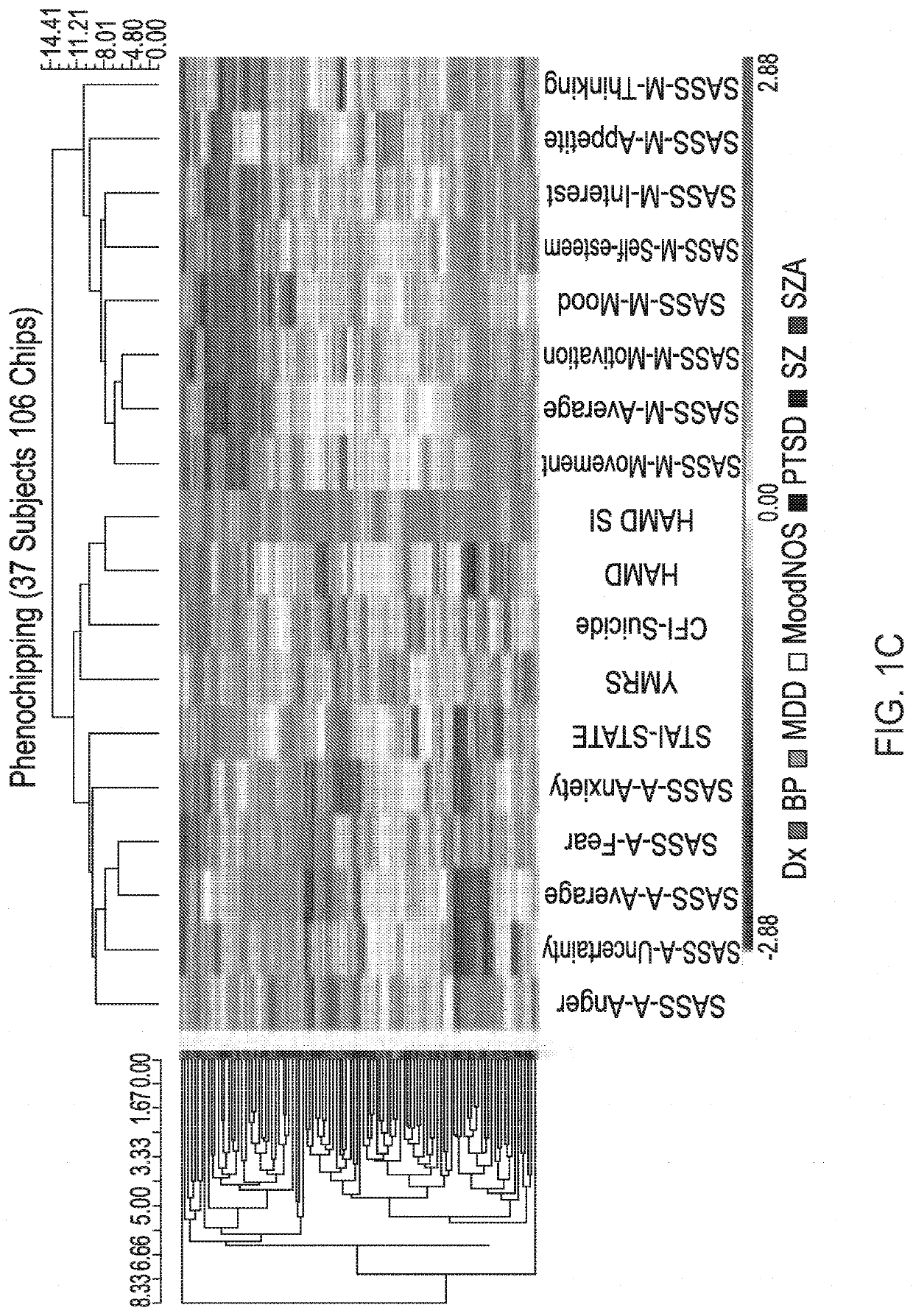Predicting suicidality using a combined genomic and clinical risk assessment
a genomic and clinical risk assessment technology, applied in the field of biomarkers, can solve the problems of limiting the step in the ability to intervene, the lack of objective, reliable predictors, and the leading cause of suicide in psychiatric patients, so as to increase the predictive accuracy and improve the predictive accuracy
- Summary
- Abstract
- Description
- Claims
- Application Information
AI Technical Summary
Benefits of technology
Problems solved by technology
Method used
Image
Examples
example 1
[0113]In this Example, male subjects were analyzed for predicting suicidal ideation and future hospitalizations for suicidality.
[0114]Human Participants
[0115]Data was obtained from four cohorts: one live psychiatric participants discovery cohort (within-participant changes in suicidal ideation; n=37 out of 217); one postmortem coroner's office validation cohort (suicide completers; n=26); and two live psychiatric participants test cohorts—one for predicting suicidal ideation (n=108) and one for predicting future hospitalizations for suicidality (n=157).
[0116]Live psychiatric participants were recruited from the patient population at the Indianapolis VA Medical Center. All participants understood and signed informed consent forms detailing the research goals, procedure, caveats and safeguards. Participants completed diagnostic assessments by an extensive structured clinical interview—Diagnostic Interview for Genetic Studies—at a baseline visit, followed by up to six testing visits, 3...
example 2
[0137]In this Example, female subjects were analyzed for predicting suicidal ideation and future hospitalizations for suicidality.
[0138]Human Participants
[0139]Four cohorts were used: one live psychiatric participants discovery cohort (within-participant changes in suicidal ideation; n=12 out of 51); one postmortem coroner's office validation cohort (suicide completers; n=6); and two live psychiatric participants test cohorts—one for predicting suicidal ideation (n=33), and one for predicting future hospitalizations for suicidality (n=24).
[0140]The live psychiatric participants were part of a larger longitudinal cohort that was continuously being collected. Participants were recruited from the patient population at the Indianapolis VA Medical Center and Indiana University School of Medicine through referrals from care providers, the use of brochures left in plain sight in public places and mental health clinics, and through word of mouth. All participants understood and signed infor...
PUM
| Property | Measurement | Unit |
|---|---|---|
| weight | aaaaa | aaaaa |
| psychiatric disorder | aaaaa | aaaaa |
| depressive disorder | aaaaa | aaaaa |
Abstract
Description
Claims
Application Information
 Login to View More
Login to View More - R&D
- Intellectual Property
- Life Sciences
- Materials
- Tech Scout
- Unparalleled Data Quality
- Higher Quality Content
- 60% Fewer Hallucinations
Browse by: Latest US Patents, China's latest patents, Technical Efficacy Thesaurus, Application Domain, Technology Topic, Popular Technical Reports.
© 2025 PatSnap. All rights reserved.Legal|Privacy policy|Modern Slavery Act Transparency Statement|Sitemap|About US| Contact US: help@patsnap.com



